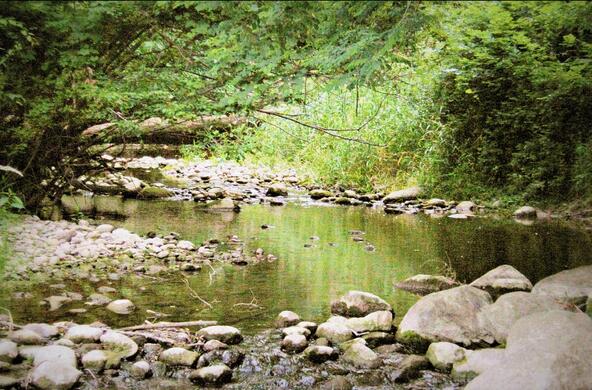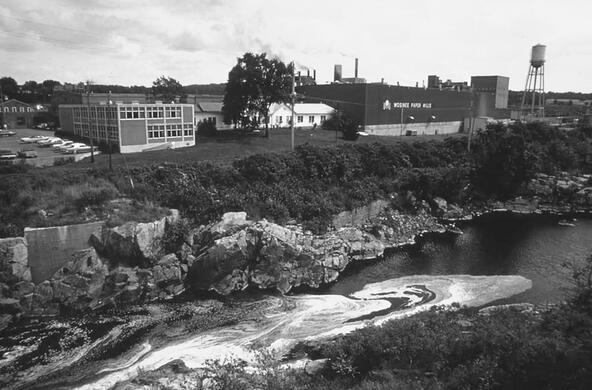Bubbling brooks and streams are a scenic and much loved feature of forest ecosystems, but long-term data at the U.S. Forest Service's Hubbard Brook Experimental Forest suggests that more productive forests might carry considerably less water, according to a study published today in the journal Proceedings of the National Academy of Sciences.
Mark Green, a research hydrologist with the Forest Service's Northern Research Station and an assistant professor at Plymouth State University, is the lead author for the study titled "Decreased Water Flowing from a Forest Amended with Calcium Silicate."
Acid rain during the 20th century caused widespread depletion of available soil calcium, an essential plant nutrient, throughout much of the industrialized world. In 1999, scientists at the Forest Service's Hubbard Brook Experimental Forest in the White Mountains of New Hampshire restored soil calcium levels to pre-industrial levels in a small watershed in an effort to better understand the ecological consequences of the depletion of available soil calcium. Subsequent studies demonstrated that following the application of a finely ground and pelletized calcium silicate mineral called wollastonite, species such as red spruce and sugar maple experienced improved cold hardiness and less seedling mortality in areas where calcium was applied.
When Green reviewed the long-term data several years later, he found something surprising about the 1999 study: within 5 months of the application of wollastonite across a 30-acre watershed, there was a substantial increase in forest water use compared to a nearby watershed that was not treated with calcium.
"Our results in this study show that when we create a substantial increase in soil calcium, this forest responded by using more water, partly associated with increased growth. The result is that we see a change in forest hydrology," Green said. "We still have to determine whether the prior decrease in soil calcium due to acid rain caused a proportional decrease in evapotranspiration and thus greater streamflow, and if that means that when forests recover from acid deposition we'll see a decrease in water flowing in streams."
As the need for carbon sequestration, biofuels, and other forest products increases, the study suggests that there might be unintended consequences to enhancing ecosystems using fertilization.
"Long-term ecological research is important to understanding the health and sustainability of the nation's forests," said Michael T. Rains, Director of the Northern Research Station. "With a network of more than 80 experimental forests located across the country and decades of monitoring data from this network, the Forest Service is contributing invaluable information about forest conditions along a complex rural to urban land gradient as well as discovering other trends through a wide-range of ongoing critical research topics."
Co-authors include NRS researchers Amey Bailey, Scott Bailey, John Campbell, and Paul Schaberg, and John Battles of the University of California, Berkley, Charles Driscoll of Syracuse University, Timothy Fahey of Cornell University, Lucie Lepine of the University of New Hampshire, Gene Likens of the Cary Institute of Ecosystem Studies and University of Connecticut, and Scott Ollinger of the University of New Hampshire.






